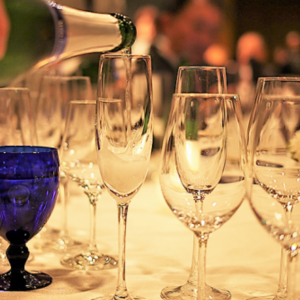
Elements of Taste
What makes an amazing food and beverage pairing? Inspiration and a little culinary knowledge can go a long way, but that’s just the beginning. There are, in fact, reliable guidelines rooted in science that can guarantee successful pairings — for top chefs and home hosts alike.
Pairing Perfection, Backed by Science:
Acidity cuts through fats – Acidity has the effect of making your salivary glands kick in. When a wine with high acidity meets a food with high fat content, it creates a cleansing effect that flushes away the richness and readies the palate for the next bite.
Protein softens tannins – Tannins dry out the mouth. Red wines with high amounts of tannins are known for their excellent interactions with protein-based dishes. Tannin molecules bind to proteins, softening them and creating a smooth sensation on the palate.
Salt complements acidity and sugar – Savory-sweet is in vogue for a reason!
Alcohol intensifies spiciness – High alcohol content intensifies heat in spicy foods. The good news is that sugar serves to balance these flavors, so adding some sweet to the mix mellows this effect out.
Pairings can complement or contrast a dish – Combining a full-bodied wine with a heavy main course is a complementary pairing. When a crisp, light-bodied wine cuts through a dish like mac and cheese, that’s a contrasting pairing.
Sake’s Strengths
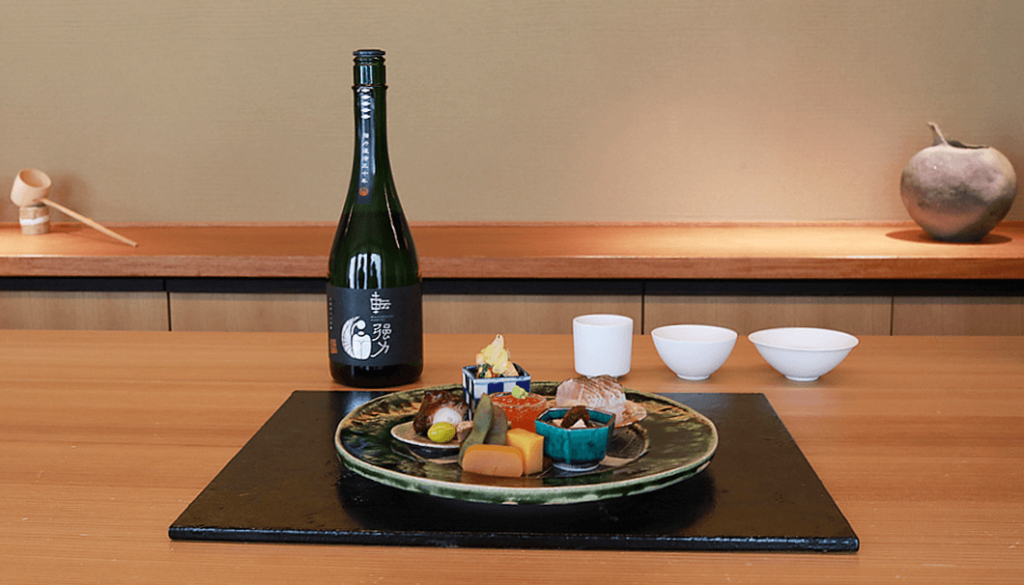
In comparison to wine, sake has its own unique qualities that make it a versatile pairing beverage:
Lower Acidity: Sake has roughly one-fifth the acidity of wine. In fact, wine is too acidic for pairing with many foods. With sake, though, that’s rarely a problem.
Umami: Umami is the essence of savoriness and is considered one of the five basic tastes. Umami is common in many main dish ingredients, like mushrooms and cheese, and its presence in sake makes the beverage a natural complement to all kinds of platings.
No Iron or Tannins: Tannins are known to create unpleasant flavors when combined with oily fish. Shibumi, a subtle tartness present in sake, mimics the sensation of tannins without this negative side effect. Sake is also void of iron content, so it won’t give off a metallic taste when paired with seafood.
Serving Temperatures: Wine is generally served between 45-65 °F. Sake, though, can be presented at a wide range of temperatures, from 41 °F to the piping hot tobikirikan style, at 133 °F. Some sake styles do better at certain temperatures, but there is still lots of room for experimentation and variety.
Classic Wine Pairings with Sake Alternatives
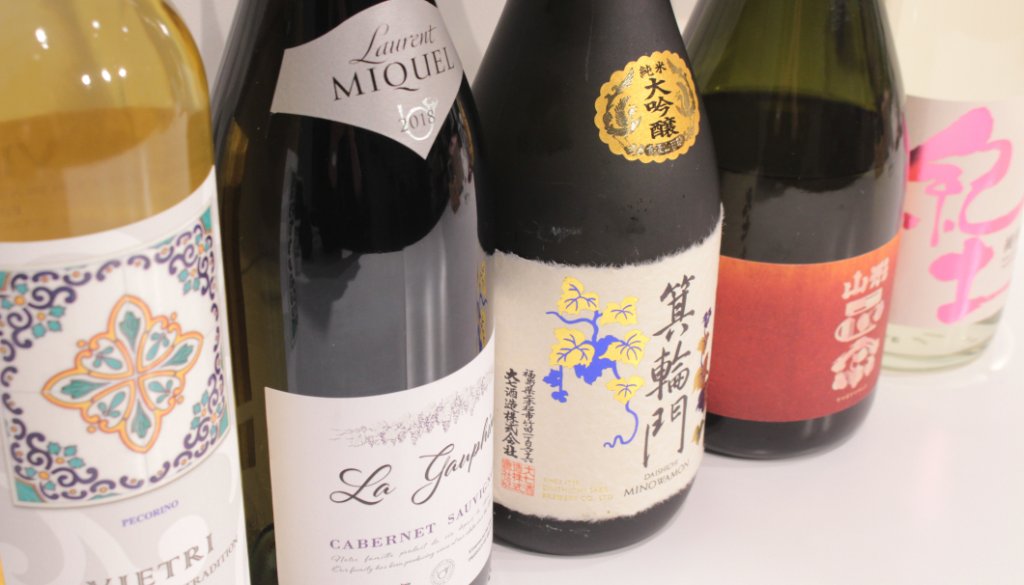
- Caviar + Champagne (Substitute with Masumi ‘Grand Prix’)
For an indulgent treat, there’s little better than caviar and bubbly from famed sparkling wine region, Champagne. The purpose of this pairing is to cleanse the palate between bites, so going with a brut nature (no added sugar) or a blanc de blanc style will give the crisp acidity and svelte texture necessary to make this pairing work.
Masumi Grand Prix by Miyasaka Brewing Company from Nagano Prefecture is a sparkling sake made in the traditional method, meaning it goes through a second fermentation in the bottle. The mousse is frothy, yet refreshing and delivers aromas of orchard fruits and baked bread. There’s a bit of sugar here, but it comes off drier due to the bubbles and sensation of umami on the palate. This heavenly match is half the price of Champagne and yields all the quality of the real thing.
- Oysters + Muscadet (Substitute with Dewazakura Izumi Judan Ginjo)
Salty gems from the sea, oysters present a menagerie of flavors, but also deliver distinct terroir character. Muscadet, a wine region in France next to the Atlantic Ocean, produces a white wine that is very well suited to shellfish. It features fresh acidity that complements oyster’s natural juices, and aromas of citrus, green apple and sea salt that gently excite the palate for the next bite.
Izumi Judan Ginjo by Dewazakura Sake Brewery in Yamagata Prefecture presents an elegant alternative. It’s very dry and has a medium body. The stark crispness of this sake accentuates the texture of oysters. The subtle nose of this lean ginjo also allows the flavors of the oysters to shine.
- Spicy Drunken Noodles + Riesling (Substitute with Oze no Yukidoke Junmai Daiginjo Natsu)
Riesling has all the components to pair precisely with Pad Kee Mao, a dish known colloquially as “spicy drunken noodles.” Riesling exhibits a wide range of sweetness levels, from very dry to extremely sweet. Off-dry rieslings are best for balancing fiery Asian dishes with their lower alcohol content and elevated sweetness.
Ryujin Shuzo from Gunma Prefecture makes a delicious brand called Oze no Yukidoke. Although not always available, their Junmai Daiginjo Natsu is a refreshing summer nama that occupies the highest premium category. Present in this sake are honeydew, ripe pear and pineapple aromas. Freshness and a lively texture accent these fruity characteristics.
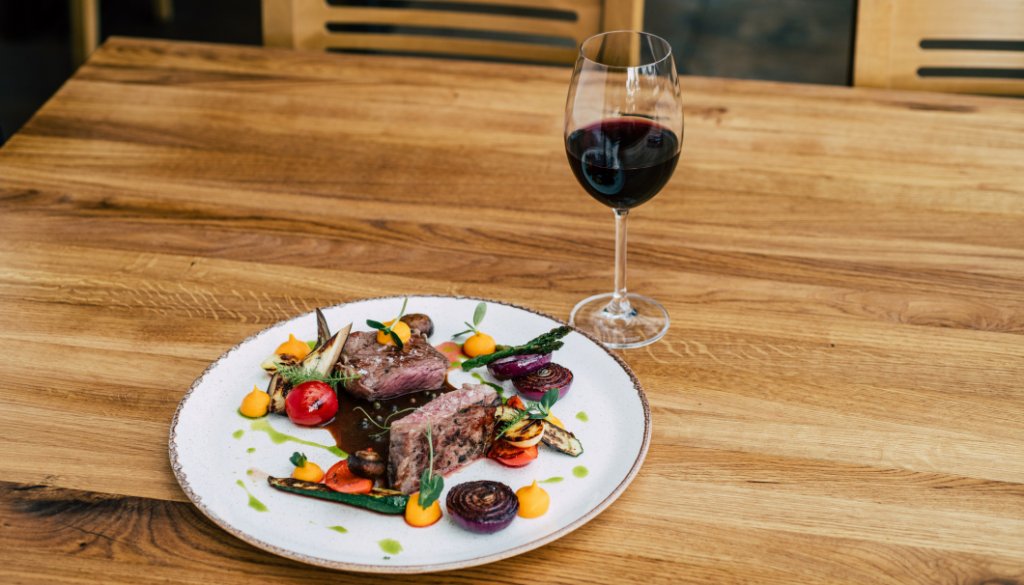
- Barbecue Pork + Zinfandel (Substitute with Akashi-Tai ‘Shiraume’ Ginjo Umeshu)
Whether it’s BBQ spare ribs, pulled pork or katsu pork cutlet, zinfandel is the #1 wine to pair with pig. Jammy red fruit aromas and peach yogurt play off the savory and smoky quality of the meat. The weight of the wine is full-bodied and envelops the palate with a silky smoothness.
Akashi Sake Brewery’s Akashi-Tai ‘Shiraume’ Ginjo Umeshu, hailing from Hyogo Prefecture, achieves a similar effect. This classy umeshu is made using Yamadanishiki rice. Plums are marinated in vats for six months before they are removed and then the sake ages another two-and-a-half years. This juicy and gently sweet sake boasts inviting aromas of red plum, cherries and a hint of almond on the finish. Served chilled, umeshu and pork will enchant the senses.
- Ribeye Steak + Cabernet Sauvignon (Substitue with Choryo Yoshinosugi Omachi Taru Yamahai Junmai “Cedar Country”)
A big cabernet sauvignon from California is often one of the first wines people choose to pair with steak. The bold black fruit with tobacco and occasional green pepper notes match a steak’s flavor profile in grilled or seared preparations. The tannic content of this red wine is subdued by protein and softens the body of the wine.
It’s tricky to find an appropriate swap for this wine in the sake world, but there is one that checks all of the boxes: Choryo Shuzo’s Yoshinosugi Omachi Taru Yamahai Junmai “Cedar Country” from Nara Prefecture. It’s made with ancestor rice strain Omachi and in the yamahai starter style, resulting in a silky brew with tons of umami. It’s also classified as taruzake, meaning it’s been aged in cedar barrels. This type of aging adds an herbal character and mimics the vegetal aromas in some cabernet sauvignon. Drink this at room temperature or warmed to nurukan (104°F) to intensify aromas and match the warmth of a steak straight off the skillet.
Putting it in Practice
The vast array of sake styles offer enough variety to satisfy the desires of any connoisseur. The endless spectrum of flavors, textures, dryness and serving temperatures make sake one of the most diverse beverages available for pairing.
With a little imagination and a working knowledge of what makes a pairing sing, sake can easily replace wine for surprising and impactful dining experiences that will wow guests every time.


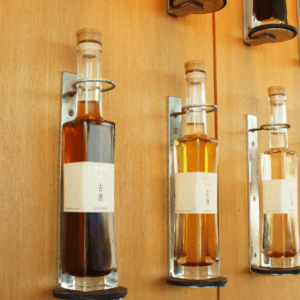
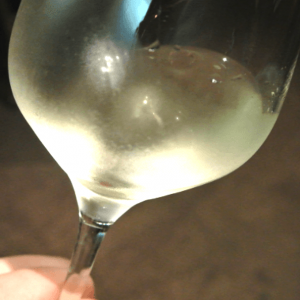

Comments